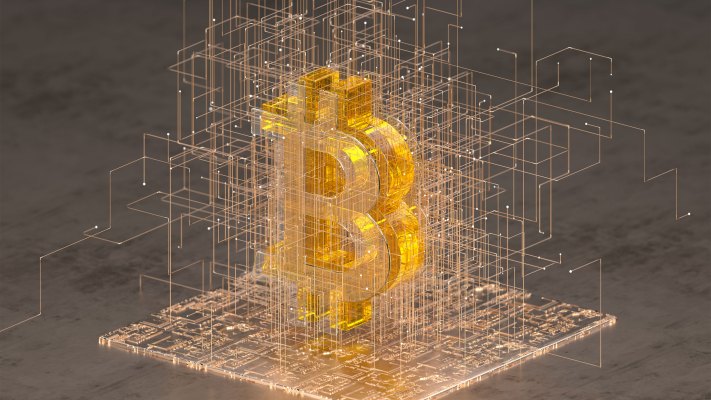Ordinals, an NFT-like project on the Bitcoin blockchain, has gained momentum over the past month, signaling a chance that a new frontier may be on the horizon for the biggest cryptocurrency. But in order to be the biggest, experts say its accessibility and security need to be improved.
Over 90,000 Ordinals have been inscribed — which is jargon for created (or minted) — on the Bitcoin blockchain to date, according to Dune Analytics data. Ordinals hit an all-time high on February 9 for the number of mints at over 20,000 that day.
“It seems foolish to say this won’t be a very impactful revelation,” Nick Hansen, CEO and co-founder of Luxor, told TechCrunch. “I can’t predict the future, but given current trends and hockey stick growth, we’re definitely headed to more Bitcoin NFT inscriptions now than fewer.”
The Ordinals project isn’t the first to try bringing NFTs onto the Bitcoin blockchain. Counterparty was the first platform to inscribe NFTs on Bitcoin’s network with the Rare Pepe collection in 2014. Although Rare Pepe didn’t do much to boost mass demand, one of its NFTs from 2016 sold for $3.6 million at a Sotheby’s auction about a year ago.
Ordinals stands out as a project for directly inscribing onto satoshis, the smallest denomination of bitcoin (equivalent to 100 millionth of a bitcoin), without needing another chain or token. “The unique thing about Ordinals is its putting the image literally in the blockchain,” Muneeb Ali, co-founder of Stacks and CEO of Trust Machines, said. “Other NFTs usually link to the images on-chain.”
Even though Ordinals and Bitcoin NFTs in general are exploding, it’s still in very early stages, especially when compared to behemoths like Ethereum and Solana.
“It’s very clunky because it’s day one,” said Alex Adelman, the co-founder and CEO of Bitcoin rewards platform Lolli. “It’s like the Wild West, but that’s how NFTs felt back in the day, as well with Ethereum.”
Ethereum and Solana now have a huge leg up when it comes to infrastructure, communities, and trading platforms and collections. In the past 30 days, Ethereum, the No. 1 blockchain by NFT sales volume, saw volumes increase 35.5% to $860 million across over 178,000 buyers, according to CryptoSlam data. Solana, the second-largest blockchain by NFT sales volume, fell 15.6% to $114.6 million across over 80,000 buyers during the same time period.
“Ethereum has proven there’s a market for this already and is essentially stealing market share based on demand,” Adelman said.
So, inherently Bitcoin NFTs will compete with other major NFT ecosystems, Hansen said. “I think we’ll most likely see a lot of Ethereum NFT projects building bridges to move to Bitcoin.”
When people build on Bitcoin, it gets a lot more attention, Ali said. “Some people think it’s more valuable than other chains because it’s unclear if those other chains will be around, but bitcoin will likely be around in 10, 20 or 50 years from now.”
But this expansion won’t happen overnight, and the current infrastructure for Bitcoin NFTs is extremely clunky and still done manually on many fronts. For example, many people are legitimately completing inscriptions manually rather than through a service like an NFT marketplace.
“Buys are happening through Discords and Google Sheets,” Adelman said. “Marketplaces are very much needed; we can’t be buying and selling on Google Sheets for much longer because there’s going to be hacks, people will get pissed off and it won’t be sustainable.”
Last week Gamma, a marketplace for Bitcoin NFTs, launched its Ordinals feature to help people who have a Bitcoin address inscribe their own NFTs. “We had over 2,000 people submitting inscriptions in the first two hours,” Jamil Dhanani, founder and CEO of Gamma, told TechCrunch. “This is an indication something is here and we’re not sure it’s going to be the same as Ethereum NFTs, but the value of inscribing data resonates with people.”
Accessibility is the “north star for all of this right now,” Hansen said. “How do we get a wallet and see our JPEGs? Right now there’s no way to get around it, all of it is really difficult, and custodying it has been hard. The bar is incredibly high right now.”
Adelman agreed, noting “it’s not accessible at all.” But in 2017, there weren’t very many experiences that were accessible in the Ethereum ecosystem, either, he said.
“There will be services to improve all of this and the access,” Hansen said. “As the products and services come to market, it will become more and more prevalent the amount of inscriptions being minted, inscribed and transacted.”
“Within a year, we’ll have full ecosystems of plug-and-play NFT projects like on Ethereum would be my guess,” he added
And more capital and developers will surely enter the space. “My inbox is overflowing with developers on Ethereum and Solana who don’t know how to build on Bitcoin. The developer community in Bitcoin is getting real demand now, and people are throwing money at it,” Ali said. “That’s exciting and a healthy thing [ … ] people realize bitcoin carries a premium, but a ton of work needs to be done.”
Over time, there will be “much more use of bitcoin and a much more robust market,” Dhanani said.
“If Bitcoin wants to stay the most decentralized, widespread and prolific cryptocurrency, it needs something like [Bitcoin NFTs] to push it forward,” Adelman said.
